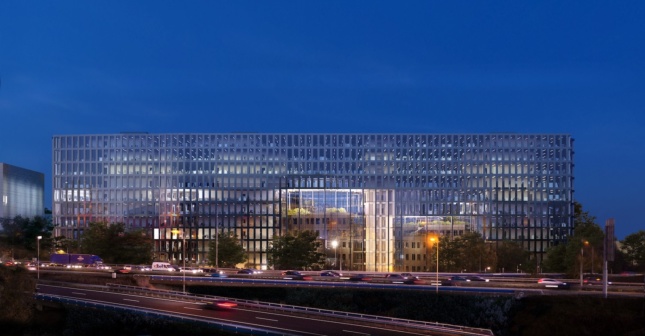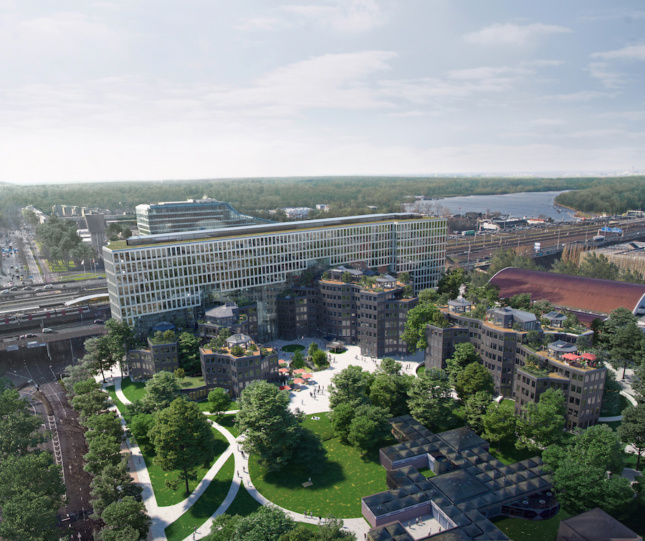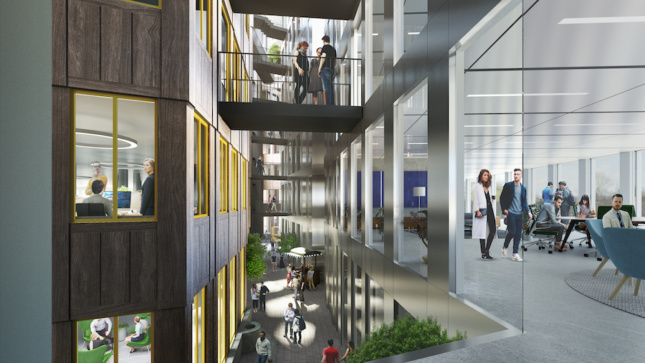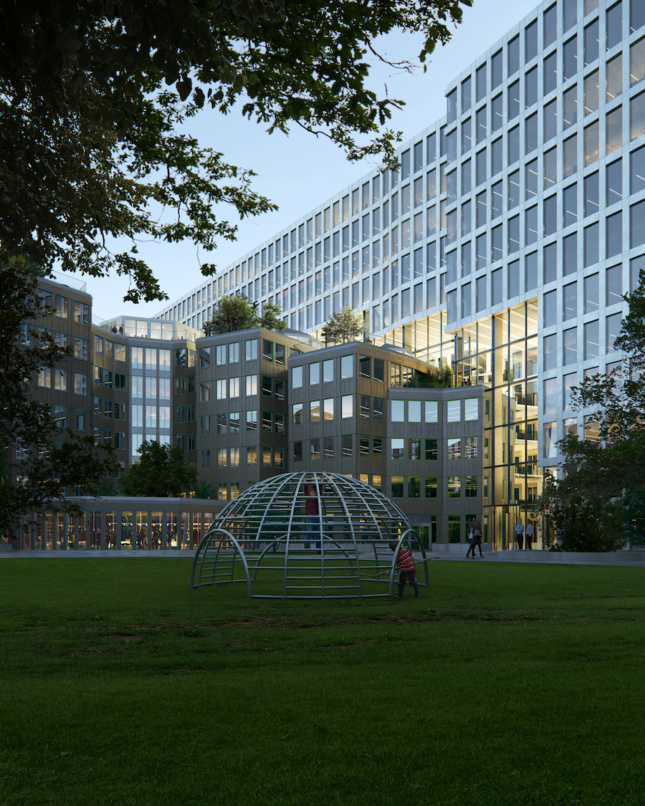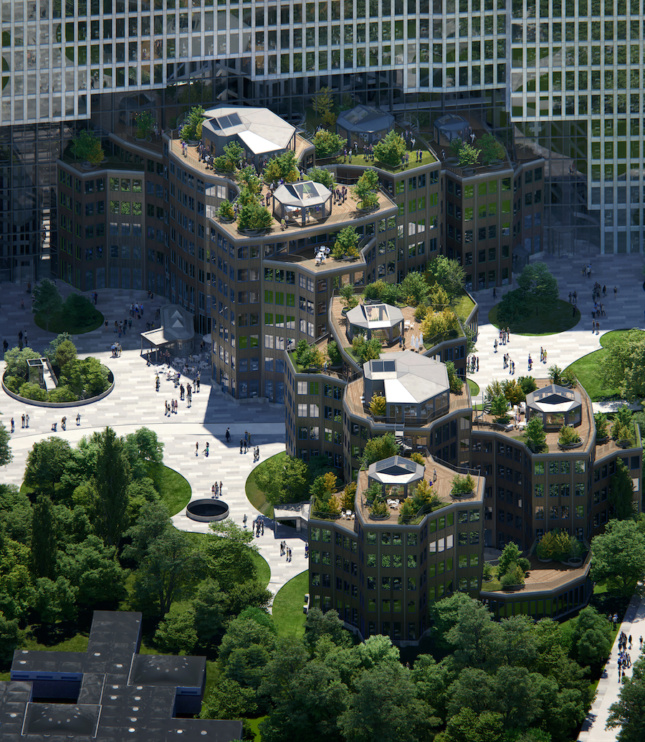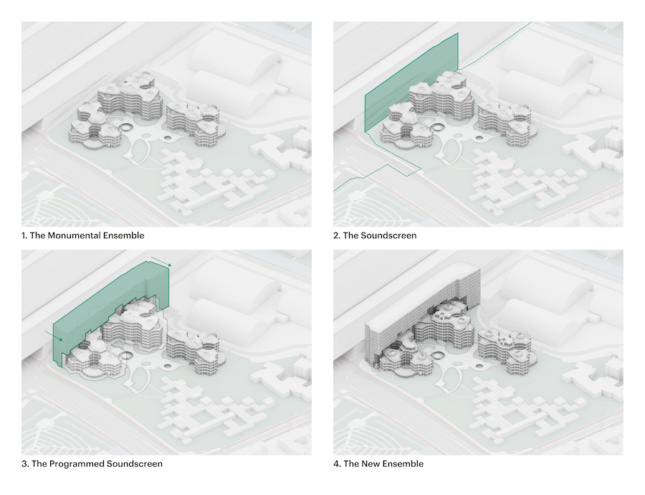Dutch firm MVRDV has unveiled plans for Tripolis Park, a large-scale redevelopment project calling for the renovation and expansion of an architecturally significant Amsterdam office park that sits directly next to the A10 motorway (Rijksweg 10), the city’s bustling primary ring road.
The most significant new addition to the existing Tripolis campus will be a rectangular, 11-story office block; a proper “groundscraper” per MVRDV, that will pull double-duty as a sound screen. Spanning nearly 400,000 square feet parallel to the A10, the photovoltaic array-topped structure will help muffle the constant roar of traffic produced by the highway. And, only fitting for a shiny, ultramodern office building situated nearly atop a traffic-clogged ring road, the star tenant will be Uber.
Completed in 1994, Tripolis, which will be rebranded as Tripolis Park once the redevelopment of the site is complete, is one of the final works of influential Dutch architect and theorist, Aldo van Eyck. An outspoken proponent of Structuralism, van Eyck is best known for the Amsterdam Orphanage (1960) and for the hundreds of public playgrounds that he created across the city in the 1950s, ’60s, and ’70s.
Located a stone’s throw from Van Eyck’s iconic, national monument-listed orphanage, Tripolis—itself a monument site since 2019—has historically suffered from low occupancy rates despite its eye-catching design, desirable location in Amsterdam’s fast-growing Zuidas business district, and attractive, courtyard-centered orientation. Composed of a trio of curvy mid-rises in which clusters of office suites fan out from central staircases, the existing buildings will be fully renovated by MVRDV to ensure that they “become commercially viable” according to a press release. Amsterdam-based real estate developer Flow is spearheading the project.
The buildings’ signature design characteristics, namely their wood and granite facades and colorful window frames, will remain while MVRDV will add new elements such as rooftop gardens. The northernmost of the three existing buildings, Tripolis 100, will remain separate from the new groundscraper-slash-highway noise-blocker and eventually be converted into an affordable housing complex.
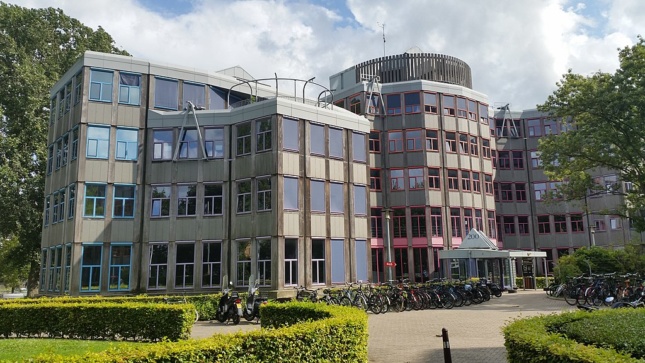
Tripolis 200 and 300, the two existing buildings not slated for conversion into future housing, and those located closest to the A10, will be woven into the footprint of MVRDV’s new building.
“This block is indented where it meets the existing buildings, adapting its grid structure to the complex geometry of Van Eyck’s offices,” explained MVRDV. “The relation between the austere, regimented south façade and the playfully indented north façade is revealed by a high-transparency eight-storey window that provides a glimpse of the existing Tripolis buildings where the indentation punches almost all the way through the new structure.”
This melding of old and new at Tripolis Park is certainly dramatic, especially when considering the newer building’s hulking rigidity and the wavy, organic forms of Van Eyck’s older structures.
“So I am a fan of Aldo van Eyck’s oeuvre and I think we should treat his design as respectfully as possible,” said MVRDV founding partner Winy Maas in a statement. “The new building guards and shelters the existing Tripolis complex as it were, thanks to the protective layer we create. We literally echo Tripolis, as if it was imprinting its neighbour. The space between will be given a public dimension and will be accessible to passers-by. As a visionary in his time, Aldo already saw office spaces as meeting places. I want to continue that idea by promoting interaction between the two buildings in various ways.”
Uber, whose international headquarters are currently located elsewhere in Amsterdam, will also take up residence in the largest of the existing Van Eyck buildings in addition to occupying several lower floors of MVRDV’s A10-abutting structure.
As reported by Bloomberg, Uber will occupy two-thirds of the Tripolis campus in total starting in 2022. The San Francisco-based tech giant will have the option to rent even more space as its Amsterdam workforce continues to grow. Since 2017, the number of Amsterdam-based Uber employees has jumped from 400 to 1,700, prompting the company to seek out a more spacious home.






